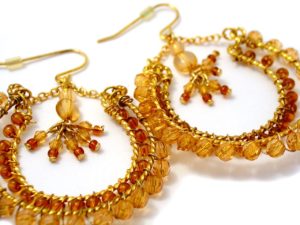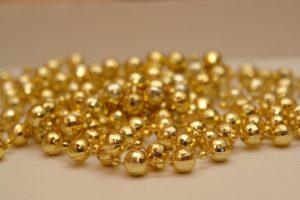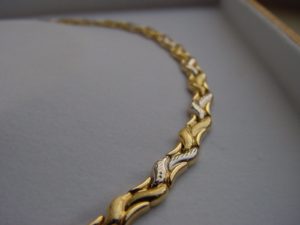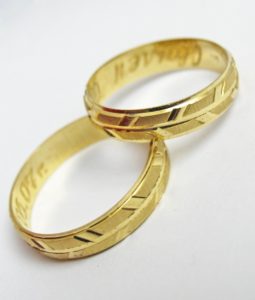Gold is one of the most cherished resources across the world and is rightly considered the king of all metals. And it makes absolute sense when one considers the many features that are associated with the gleaming metal.
It is a corrosion-resistant ductile metal that is so malleable that it can be beaten into thin sheets.
It could be bought as gifts for a wedding or it could be used as a safe investment. It could even be bought, simply because one wants to own some new piece of jewelry.
Whatever the reason, the decision to purchase gold is often followed by a number of questions—one being, “What is a karat”?
What is a Karat?
Simply put, a karat can be defined as the unit measure of gold purity.
The higher the karat in a gold item, the purer it would be. Be it in the form of coins, bars or jewelry; gold is available in a number of karats and the same has different uses respectively.

24 Karat
The purest form of gold available is 24 karat. Gold purity is denoted by 24 parts and all parts represent a percentage of gold.
Anything made from 24 karats gold is said to have 99.9% gold in it. It has a bright yellow color that sparkles and shines. It is the most expensive form of gold with a density that is less compared to the gold of lower karats. The low density makes 24 karat gold malleable and soft, making it less suitable for jewelry items. It is most likely to be used in the form of gold bars and coins.

22 Karat
22 karats represent the purity of gold with 22 out of 24 parts being gold and the rest as other metals like silver, zinc, nickel, etc. This type is said to have 91.67% gold and 8.33% all the other metals. It has a relatively duller yellow color because of the lower concentration of gold. Also, it is generally less expensive than 24 karat gold.
These metals are mixed with gold to make it firm and sturdy. It is done so that the alloy becomes suitable for making durable jewelry that doesn’t break when worn on a daily basis.
22 karat gold is considered suitable for buyers who prefer solid gold jewelry as it is not appropriate for making diamond or other stone studded jewelry. It is because diamonds and other precious stones have their individual weights that are to be borne by the holding metal i.e. gold.
22 karat gold is soft as compared to these stones and is incapable of holding them firmly through the daily use of the ornament. This type of gold is often found in a lot of wedding jewelry and other ornamental items used for special occasions.

18 Karat
Any item made of 18 karat gold comprises of 75% gold and 25% other metals like silver and copper. 18 karat gold is highly suitable for making diamond and other stone-studded jewelry. It is often less expensive than 24 karat and 22 karat gold. It has a warm yellow tone that makes it absolutely desirable for those looking for exquisite gold and diamond jewelry.
18 karat gold is popular for making wedding rings because of its appropriate balance of gold and alloyed metals.
Wedding bands and engagement rings are tokens of eternal love and are worn throughout a couples’ lives, demanding durability and firmness in their qualities. It’s no wonder that most people choose a type of gold that retains its natural colour but has a long-lasting durability to it!

14 Karat
14 karat gold is made up of 58.3% gold and a 41.7% mixture of other metals such as copper, zinc, silver and nickel. With only 14 parts of gold out of 24, It’s usually less expensive than the gold of higher karats and is more resistant to bends and folds due to the higher percentage of harder, alloyed metals. The 14 karat color is often paler than those of higher karats because of the lower saturation of gold.
It is extensively used to make rings and pendants that are worn casually in one’s day to day life. The sturdiness and affordability in its price makes the 14 karat gold item a favoured measure of purity.

10 Karat
With 41.7% gold, this type of gold has 10 parts of gold out of 24. The percentage of alloyed metals is higher than that of gold i.e. 58.3%, making it less precious and more susceptible to tarnish. It is cheaper and paler compared to 14 karat gold. Because of its relative simplicity, 10 karat gold is often used in simple chains, rings and other items.
Though 10 karat gold is absolutely durable in terms of its quality, it is less likely to be bought by customers who are interested in purchasing lavish pieces of jewelry.
All these forms of gold have their own uniqueness and desirability. Whether one goes for 10 or 24 karat, gold is bound to glitter and cast a glow on its wearer, making the purchase worthwhile.



Stay In Touch